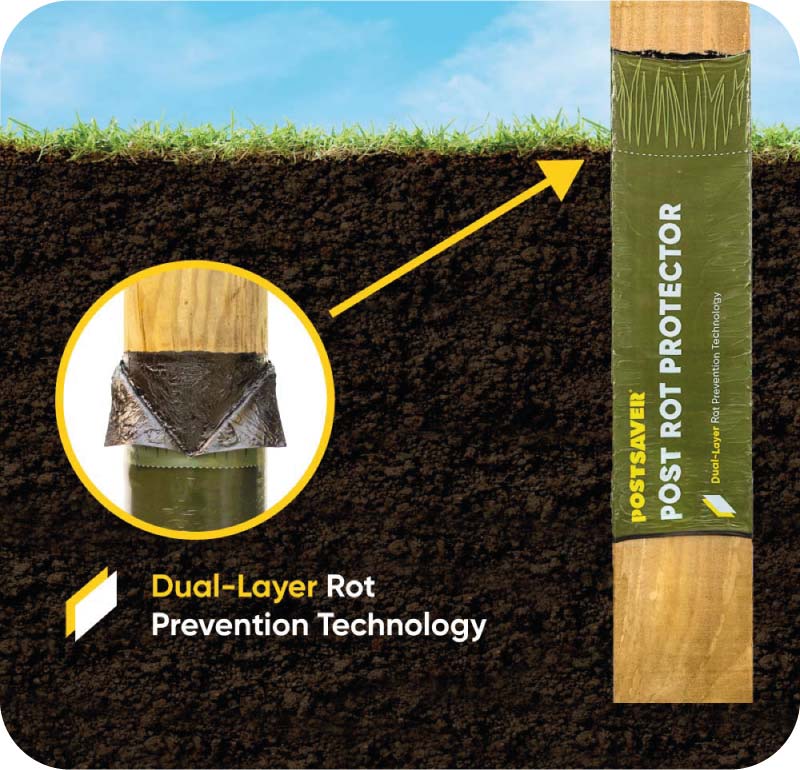In The Post Newsletter this month we compare the Postsaver Full Barrier option to Partial Barrier options such as tape, paint and bags. Additionally, we discuss the product testing that helped form the basis of the Postsaver guarantee. Finally, we answer a few of the most common questions received.
Before looking at the product testing carried out, let's briefly discuss why wood rots and what stops wooden posts rotting straightaway.
Wood naturally decays in the ground over time, when the following factors are present:
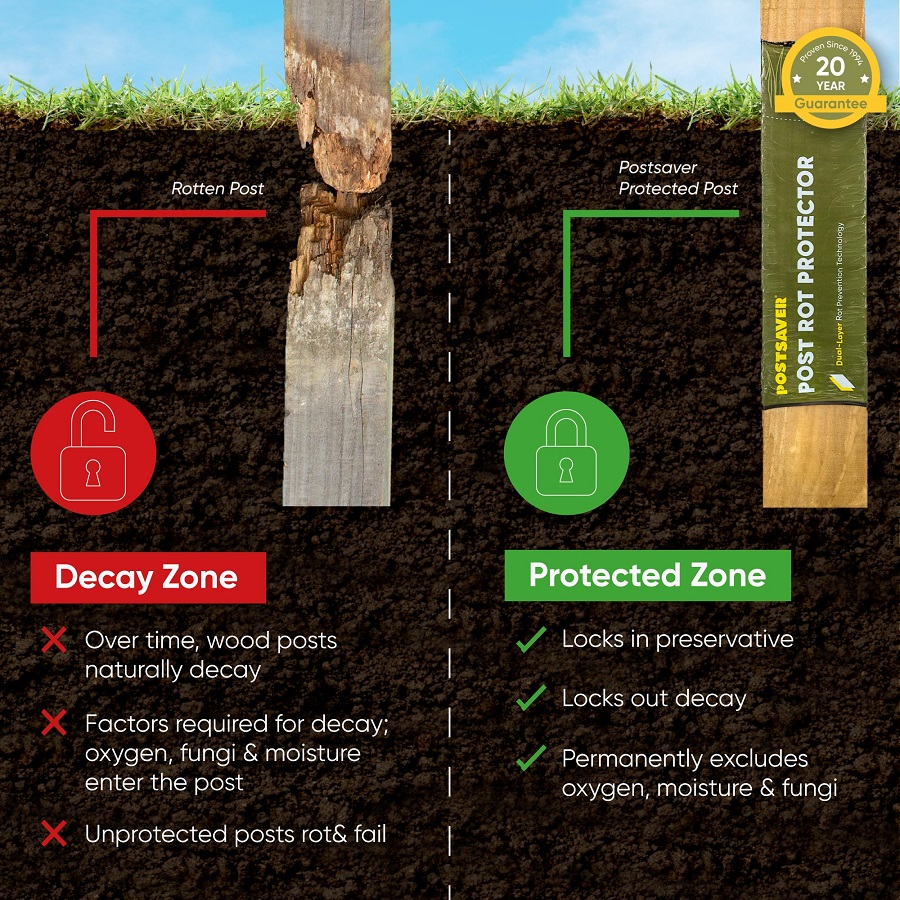
UC4 treated wood is essential for all wooden posts in ground contact. Initially, good quality UC4 wood has a high enough concentration of wood preservative within the post to prevent decay. Over time, preservative leeches out into the surrounding soil.
The WPA Make Sure it's 4 Campaign highlights the importance of using the correct Class of wood for the job. To ensure safety and best practice, visit the WPA website, view their guidelines and download free assets for you and your customers.
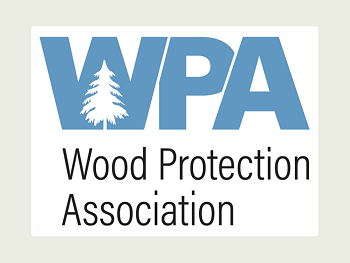
The addition of partial or total barriers to a UC4 post can create longer-lasting posts, but some are more effective than others. A truly effective barrier excludes rot-causing factors, whilst retaining high levels of wood preservative within the post.
In this test, three UC4 wooden posts were submerged to ground line level in blue ink saturated water for 6 months, in order to determine where water was able to saturate the post.
Post 1 was a standard control post with no barrier applied, Post 2 had a partial barrier applied and Post 3 had a Postsaver full barrier sleeve applied.
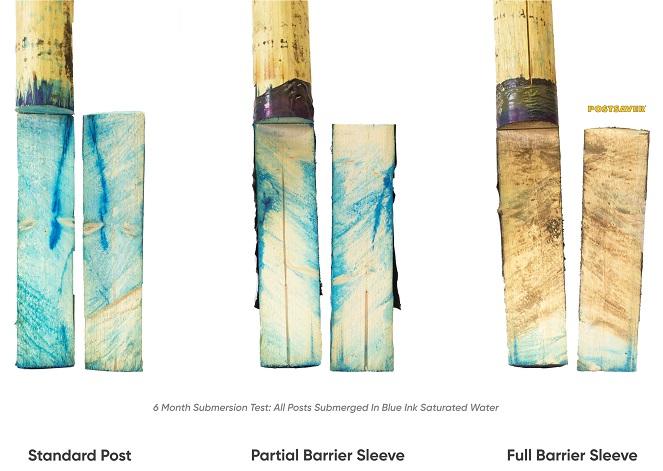
After 6 months, as can be seen from the above image, all posts were sawn in half lengthways from the ground line to base, to show where the blue dye had travelled into the post. The blue dye shows where the barrier has failed.
The standard post, as expected, was fully saturated with blue dye above the ground line level, proving the test worked correctly as water was able to travel into the post.
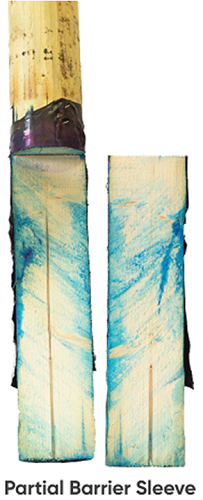
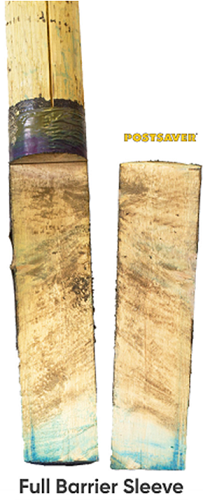
In addition to the submersion test, Postsaver rot protectors have undergone real-life field testing for over 20 yrs at BRE - one of Europe's largest independent testing laboratories. This produced real-life independent data to use as the basis of the Postsaver guarantee.
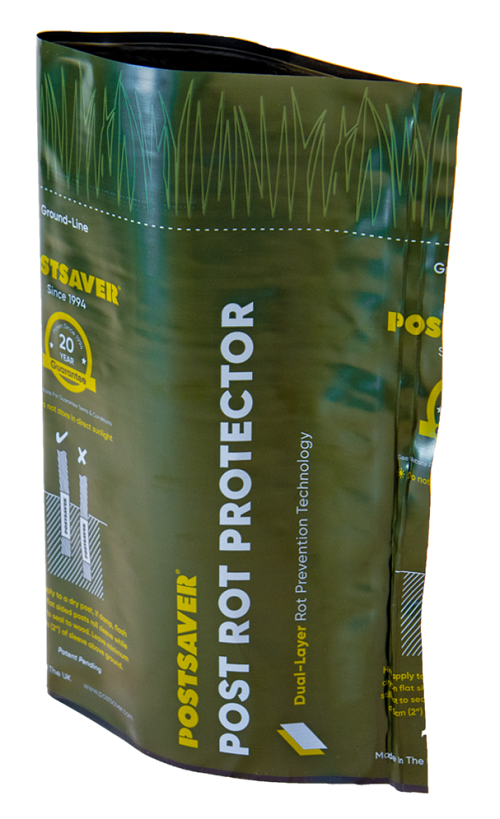
Unlike partial barriers, Postsaver rot protectors are able to form a true air and watertight seal against the causes of rot, and are able to retain the wood preservative inside the post.
Due to long-term investment into independent testing, Postsaver can confidently offer a guarantee backed by scientific evidence.
Provided that a Postsaver rot protector has been correctly applied to a post, the post can be safely installed using any of the usual methods, including concrete, back-fill or pile driving, and will be covered by the Postsaver guarantee.
Just be careful not to damage the sleeve with any tamping tools or spades.
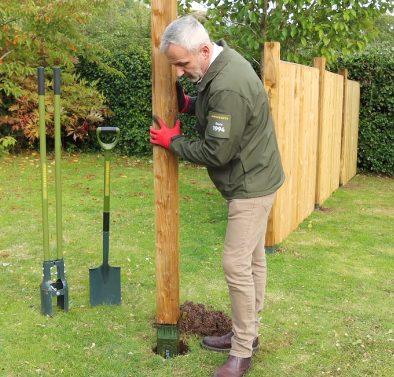
Below 6 inches or 15 cm in the ground, there is not enough oxygen for the fungi required for decay to survive; this means there is no need to protect the post below this point.
Play the short animation to briefly demonstrate how Postsaver works.
For more information, click the button below.
The Postsaver website has an FAQ page which should help answer most of your questions, and can be accessed using the buttons below. Get in touch with Tony or Claire to clarify any of the questions, or for further information.
That's it for this months edition of The Post Newsletter. To get in touch with Tony or Claire, simply drop them an email: trade@postsaver.co.uk

